On November 28, 2014, twenty two people (19 children and 3 adults) in the village of Berezovka in western Kazakhstan were poisoned by an unknown toxic substance. The village is located in dangerous proximity to the Karachaganak Oil and Gas Condensate Field, operated by the Karachaganak Petroleum Operating, B.V. consortium, comprised of British Gas, Italy’s ENI, Chevron, Lukoil and Kazmunaigaz. After claiming for several days that they did not know what caused the 22 people to faint, convulse, and require hospitalization, doctors finally stated that the cause was clearly toxic exposure. KPO denies that any of its monitoring equipment registered elevated emissions levels during the time of the poisoning.
Uralsk Weekly, an independent regional newspaper, has been covering the story. Here is their initial coverage; additional articles, in Russian, can be found on their website, http://www.uralskweek.kz/ or on their facebook page: https://www.facebook.com/uralskweek.
Crude Accountability is investigating these recent events and will report more soon.
Uralsk Weekly
November 29, 2014
“Mass Poisoning of Children in the Village of Berezovka, close to Karachaganak. How it was.”
(Photo report)
Today the small village of Berezovka, located three kilometers from the Karachaganak Field became famous throughout the entire country. In the local school children started fainting, one by one, after classes began. According to official data from the village, 20 school children and 3 teachers were hospitalized with signs of poisoning from an unknown gas.

All of those who were suffering were sent to the central regional hospital in Aksai. One school girl was placed in the intensive care unit and, according to parents, the others were placed in the general ward.
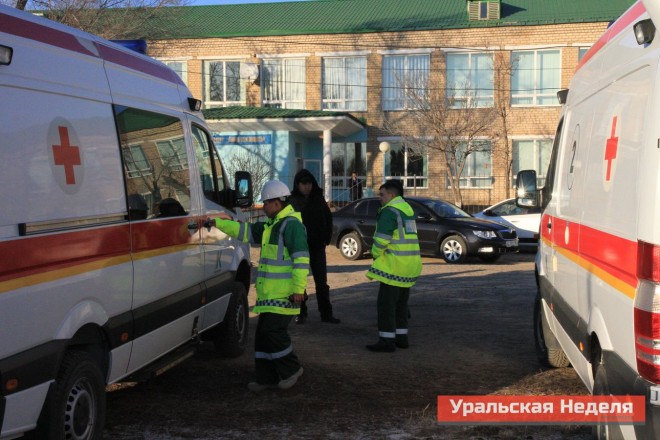
The Berezovka school was surrounded by ambulances of the company KPO, B.V. , Children started fainting two days ago, according to teachers at the school. Two days ago, two school children did not feel well; yesterday, another three. This morning, immediately after the first lesson another several children fell ill. After the start of the second lesson, another dozen children began having convulsions and fainting. The first messages from the school reached the emergency services at 10:30 AM on November 28th. At 11AM, the first four ambulances arrived in the village.
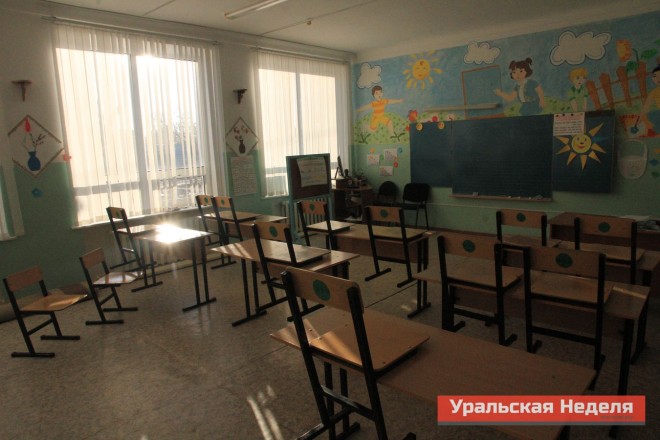
Classes at the school were canceled because of the mass poisoning. The distraught teachers gathered in small groups in the school hallways and told each other how each of their students was feeling at that time. According to them, over half of the school age children in Berezovka suffer from chronic illnesses. The most widespread illnesses are epilepsy, asthma, and renal and cranial pressure.
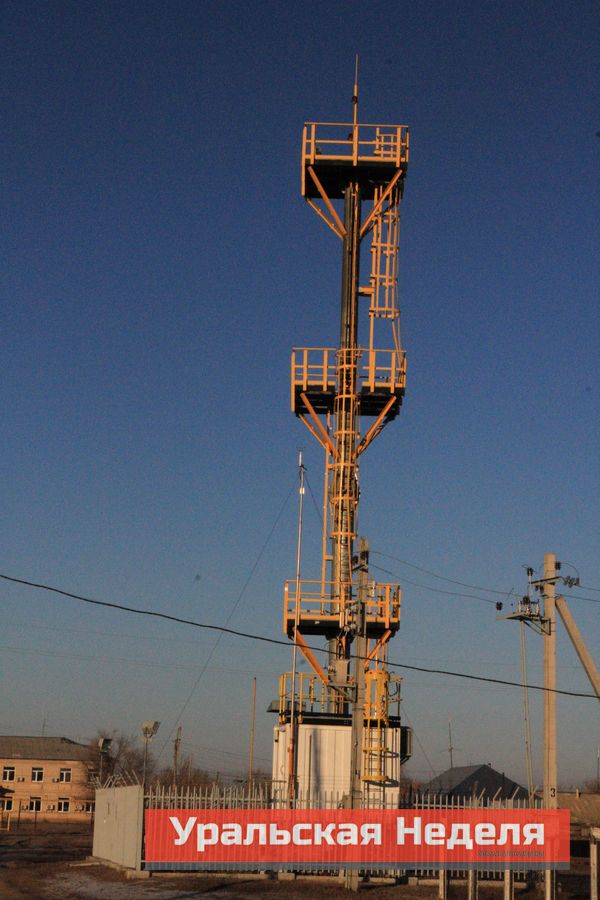
In Berezovka there are several environmental monitoring stations like this. They are the property of KPO, B.V. and the equipment at these stations signals with loud sirens if the level of hydrogen sulfide (the main dangerous component of gas condensate) exceeds the maximum permissible concentration. KPO B.V. set these stations up several years ago. The foreign investors are sure that the equipment is so sensitive to hydrogen sulfide that the siren will go off as soon as the level of hydrogen sulfide is half the level of the maximum permissible concentration. But the sirens did not activate two days ago or yesterday or this morning. The sirens failed to warn the residents of Berezovka of hydrogen sulfide emissions.

After lunch, the mothers of children who had been hospitalized in the morning started going to the school. After being convinced that their children were being helped, the women returned to the village to find out what sort of decision had been reached by the members of the commission of the regional mayor’s office, which works in the village. Lidiya Tarasenko, a resident of the village states, “They told me that my child became sick at school, and I ran to the medical clinic. They began to bring the children there. All of them had numb fingers, their eyes were rolling back in their heads, and they could not stand. They brought them to the medical clinic one after the other. I ran to the school. They were also gathering children in the gymnasium. One girl was convulsing so badly that our military instructor was unable to restrain her.”
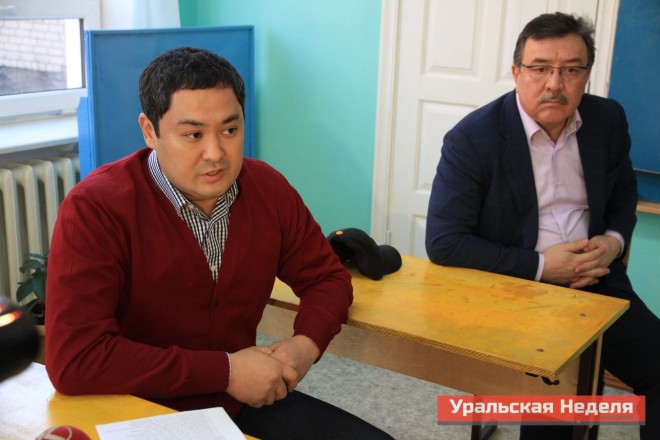
After a while the mayor of Burlin district, Marat Tusupkaliev (left), and the deputy mayor of the district, Arman Utegulov (right), came to meet with the parents who were gathered. They told the village residents that a special commission had been formed to investigate what had happened. “All 170 school children in the village will be examined. Doctors from Uralsk and Aksai will be on hand in the village until the end of the investigation. We will check everything, including the school cafeteria, in order to exclude all irrelevant factors. Believe me, we are as interested as you are in finding out the truth about what happened,” said the district mayor.

Meanwhile, the reason is obvious to the local residents—gas emissions from the field. Those who were gathered spoke in one voice about the fact that the smell of hydrogen sulfide has been noticeable in the village, particularly over the last two days or so. “Yesterday there was a big white cloud from the side of GP-3. There were surely emissions from there, which they failed to tell us about. I live on the edge of the village, where the river runs. The earth has been humming there for two days. You sit at home and have the feeling that a truck is driving down our street,” says resident Lidiya Samara.

In the evening the parents of the hospitalized children gathered at the central district hospital in Aksai. They say that all the children received a saline drip. “All the children have problems with their blood pressure. They measured the blood pressure of the older school children in front of me. The monometer showed 76 over 65. Another child’s pressure fell to 70 over 58. One doctor said that children could not walk because of spasms in the blood vessels in their legs. Before you arrived, the main doctor came and said that our children became ill from working too hard. Lies. The children became ill after the first lesson. When did they get overworked? I know they will blame this on whatever they can—getting a cold, food poisoning. They already told one mother that her daughter became ill because she reached puberty. The main thing for them is not to blame the field. Every year, only one in ten of our boys is admitted to the army, and they always blame it on poor food. No one has ever said that it is because of the environment,” says Berezovka resident Raikhan Duyusova.

The doctors were nervous in the presence of a journalist. Emotional parents, two dozen sick children, and on top of that, journalists. In the photo, the main doctor of Burlin Central Regional Hospital, Maksut Baicherkeshev, forbids KTK TV station camera operator Andrey Simbirev from shooting in the hospital. After the deputy mayor of the district, Arman Utegulov, was in the hospital, the main doctor changed his stance from anger to kindness and agreed to give an interview to the journalists, but once the camera started rolling, the main doctor was urgently called to the children’s ward.
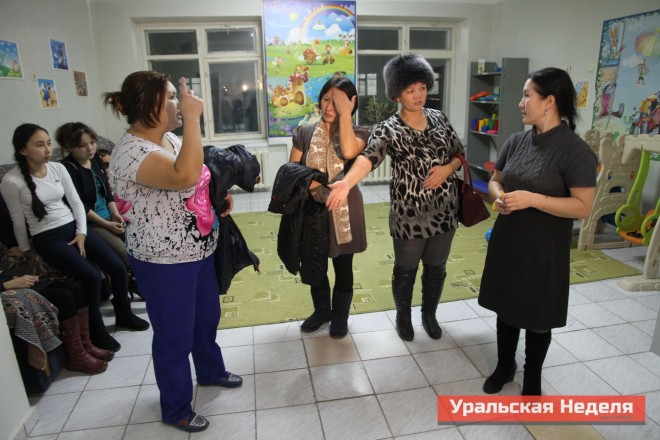
At the same time, the mothers of the sick children began to demand some kind of diagnosis of their children from the representatives of the regional health department. The representative from the regional health department (at the far right in the photo) promised to provide an official diagnosis once all the children had been examined.
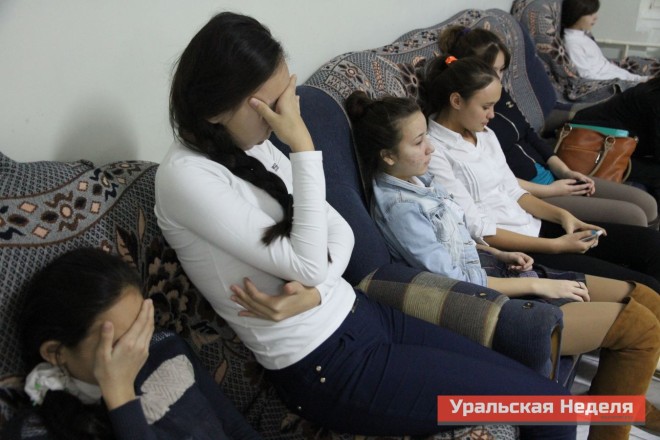
All the hospitalized children were taken in turn to see the members of the medical commission, which consisted of several specialists and a psychologist.

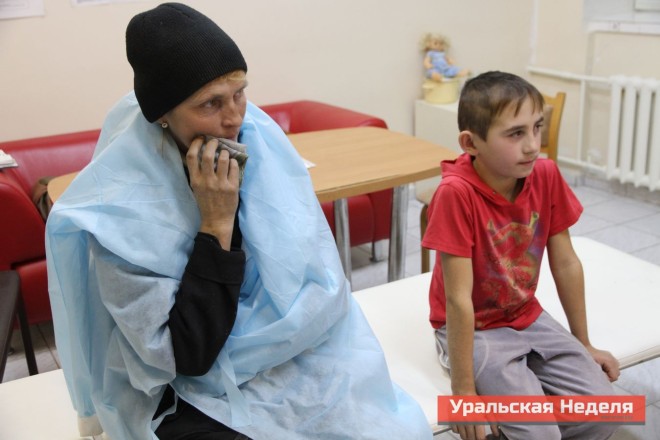
Elena Fakhutdinova with her son Sergey, who is in the fifth grade in Berezovka, sits in the doctor’s waiting room. Sergey was among the 19 first students who became ill after the first lesson. “Serezha told me that his eyes went dark and he only came to on the way to the hospital,” says Elena.
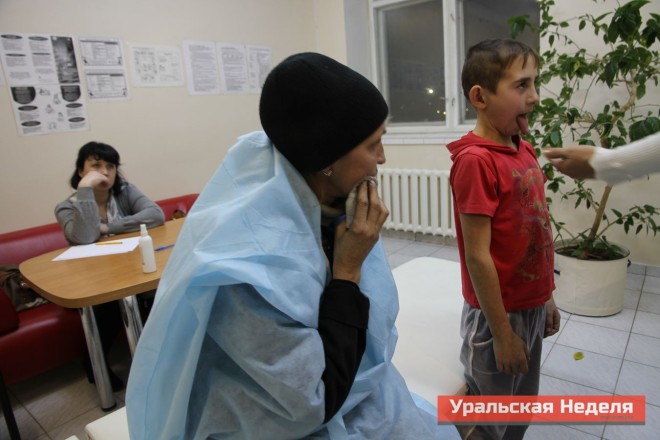
After being examined by the doctors, Serezha was sent home in the evening. “The doctors said that he became ill because Serezha has had a cold and has been taking medication for three days. They say his body is weak, and so the boy became ill. But I will never believe that after what I saw this morning. It is impossible that two dozen children suddenly become ill, all at the same time, and the reasons are all different—someone has a cold, someone else has a squint, a third has reached puberty. I’m sure it’s all because of the gas emissions,” says Elena.
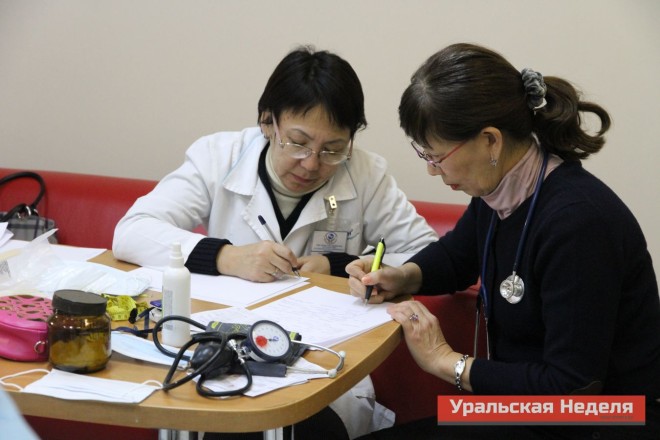
The doctors recorded the results of examining each of the sick children. According Maksut Baycherkeshev, all of the children’s tests were within the norm. More accurate test results will be ready after a careful study of all of the results.


After receiving emergency care in the central regional hospital, several of the children took a turn for the worse. The picture above shows the 11th grade student, Alina Kusmangaliyeva, with her mother Zulfiya, in the central regional hospital ward after repeated problems breathing. The picture was taken at 20:26 on November 29th.

On the evening of November 28th, brigades of emergency workers continued to bring sick residents of the village of Berezovka to the central regional hospital. The photograph was taken at 19:26 on November 28th.

Another victim is brought to the hospital from Berezovka.
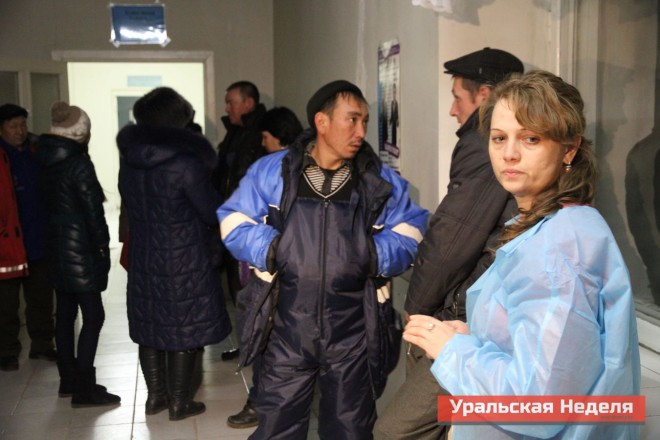
Teachers and relatives of the sick children, waiting in the corridor, share their thoughts on what is going on in conversations with journalists. “It is not surprising in Berezovka when a child faints. But this is the first time when it happens all at once and in mass numbers,” say the residents of Berezovka.
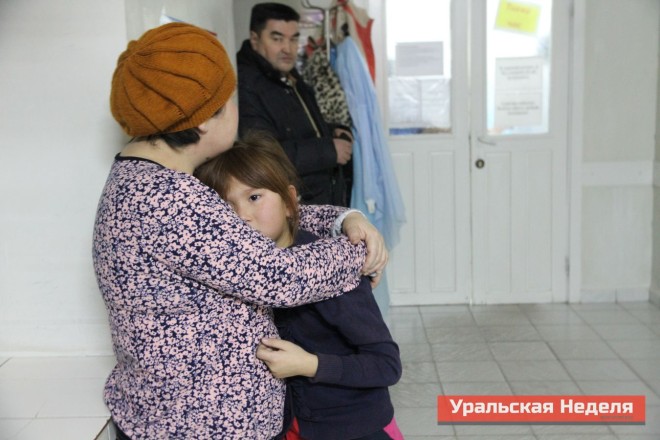
11th grader from Berezovka Alina Kusmangaliyeva, as her condition worsens while in the regional hospital ward:
http://www.youtube.com/watch?feature=player_embedded&v=Mm7W-uFwuYw
Residents of Berezovka, who witnessed the mass poisoning of children in the school:
http://www.youtube.com/watch?feature=player_embedded&v=c7vHSa3H7mg
Mothers of Berezovka children tell the deputy mayor of the region why they don’t believe the doctors:
http://www.youtube.com/watch?feature=player_embedded&v=aAOLJkO1ihA
Residents of Berezovka tell journalists what it is like to live next to the Karachaganak Field:
http://www.youtube.com/watch?feature=player_embedded&v=cc_lpQmnAic
The mayor of Burlin district during a meeting with village residents at the local school:
http://www.youtube.com/watch?feature=player_embedded&v=KVdWT6rxmRg
A worker from the Karachaganak Field explains what happened at GP-2 and GP-3 on the eve of the massive poisoning of children in Berezovka:
http://www.youtube.com/watch?feature=player_embedded&v=nufZl9XEFP0
Lukpan Akhmediyarov
Photos: Raul Uporov
Translation by Crude Accountability
